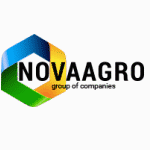U.S. Stocks Rally as Dow Hits 10,000 for First Time in Year

U.S. stocks rallied, sending the Dow Jones Industrial Average above 10,000 for the first time in a year, on better-than-estimated earnings at JPMorgan Chase & Co. and Intel Corp. Oil climbed, while the Dollar Index slid to the lowest level since August 2008 and Treasuries fell.
JPMorgan added 3.3 percent as a surge in fixed-income revenue helped the bank increase profit almost sevenfold. Intel, the world’s largest chipmaker, rose 1.7 percent after its sales forecast topped estimates by as much as $1 billion. Macy’s Inc. and Nordstrom Inc. gained on a government report that showed retail sales fell less than economists forecast last month.
The Dow jumped 144.8 points, or 1.5 percent, to 10,015.86 at 4:08 p.m. in New York. The Standard & Poor’s 500 Index increased 1.8 percent to a one-year high of 1,092.02, with financial and technology shares leading gains. The MSCI World Index of 23 developed countries added 1.8 percent.
“Intel and JPMorgan are two major bellwethers, so if the most significant semiconductor company and the most significant bank are blowing out their numbers and guiding higher, that has a positive implication for the entire economy,” said Philip Orlando, who helps oversee $400 billion as chief equity market strategist at Federated Investors Inc. in New York.
The Dow’s rally above 10,000 was led by banks and erases about half the damage done since the gauge soared to a record two years ago. More gains may depend on meeting profit estimates that call for per-share earnings among the 30 companies in the average to rise 22 percent next year and 18 percent in 2011, according to data compiled by Bloomberg.
Leaders to 10,000
Bank of America Corp., American Express Co. and JPMorgan more than doubled since the Dow slid to a 12-year low on March 9 as global financial firms began recovering from $1.6 trillion in writedowns and credit losses. International Business Machines Corp. and Hewlett-Packard Co. jumped at least 54 percent since March 9 on signs the nation was recovering from the worst recession in seven decades.
The Dow fell as much as 43 percent after Lehman Brothers Holdings Inc. filed the largest bankruptcy in September 2008 and dragged the financial system to the brink of collapse. Investors have returned to the stock market after the U.S. government lent, spent or guaranteed $11.6 trillion to shore up banks and revive the economy.
The global rally began today as China’s government said exports fell 15.2 percent in September, the smallest drop this year. The reports from JPMorgan and Intel, which followed better-than-estimated earnings at companies from Royal Philips Electronics NV to Alcoa Inc., added to evidence that the global economy is recovering from the its first contraction since World War II.
‘Powerful Recovery’
Benchmark equity indexes extended gains in the final two hours of the session as minutes from the Federal Reserve’s September meeting showed central bankers raised economic projections based on improved housing markets, stabilizing consumer spending and a recovery in growth outside the U.S.
“We’ve really moved in nine months from the threat of another Great Depression to a really powerful recovery,” said Burt White, chief investment officer at LPL Financial in Boston, which oversees $234 billion. “We’ve done that all in just a few months and that’s pretty astounding. That’s what happens when companies are lean and focused.”
The S&P 500 has rebounded 61 percent from a 12-year low in March, leaving it 13 percent below its level on the day before Lehman’s bankruptcy filing intensified the financial crisis. The rally has left the index valued at almost 21 times the reported operating earnings of its companies, the highest level since 2004, according to Bloomberg data.
Earnings Slump
Companies in the index will report a ninth straight quarter of declining profits, the longest streak since the Great Depression, before earnings return to growth in the final three months of the year, analysts’ estimates compiled by Bloomberg show. Goldman Sachs Group Inc., General Electric Co. and Citigroup Inc. are among companies that will report quarterly results this week.
Nine of 10 industries in the S&P 500 advanced today, with financial shares jumping 3.4 percent as a group to the highest level since November 2008. Technology shares added 1.5 percent collectively and were the second biggest contributor to the rally.
JPMorgan climbed 3.3 percent to a one-year high of $47.16 after posting earnings per share of 82 cents, compared with the average analyst estimate of 51 cents in a Bloomberg survey. Investment-banking revenue from fixed-income jumped to a record $5 billion, compared with markdowns of $3.6 billion a year earlier, as Chief Executive Officer Jamie Dimon capitalized on his 2008 acquisitions of Bear Stearns Cos.
Banks, Default Swaps
Bank of America rose 4.4 percent to $18.59, the highest price since November 2008, and Wells Fargo & Co. advanced 4.3 percent to $31.34.
The cost of protecting bank bonds from default fell after JPMorgan’s earnings fueled speculation the global economy is recovering from the credit crisis. Credit-default swaps on JPMorgan dropped to the lowest in a month, while a benchmark index tied to U.S. investment-grade bonds fell to an almost three-week low.
Intel rallied 1.7 percent to $20.83, its highest price in 13 months, after predicting fourth-quarter revenue of as much as $10.5 billion, topping the $9.5 billion average estimate in a Bloomberg survey. The company’s gross margin, a measure of profitability, may reach the highest level this decade. [bn:WBTKR=AMD:US]
Advanced Micro Devices Inc. [], the second-largest chipmaker, jumped 2.8 percent to $6.25. The company will report quarterly results tomorrow. STMicroelectronics NV, Europe’s biggest chipmaker, added 2.6 percent in Paris.
‘More Optimistic’
Harley-Davidson Inc. rose 6.6 percent to $26.26. The biggest U.S. motorcycle maker was raised to “outperform” from “market perform” by Wells Fargo, which said shipments will increase in 2010 and 2011, used bike prices will stabilize in the first half of 2010, and the company will gain from lower operating costs.
“Last quarter what happened was companies were beating on earnings but they had forward guidance that was mixed, at best,” said Michelle Clayman, chief investment officer at New Amsterdam Partners in New York, which manages $3 billion. “This time, you’ve not only got the earnings beat right now, but it sounds as if companies are more optimistic about their demand.”
Macy’s added 5 percent and Nordstrom climbed 2.5 percent as 25 of 28 chain-store companies in the S&P 500 advanced. The 1.5 percent decrease in retail purchases compared with the median economist forecast for a 2.1 percent drop, Commerce Department figures showed. Sales excluding automobiles climbed 0.5 percent, more than the median forecast of economists in a survey.
Energy, Transportation
Exxon Mobil Corp., the biggest U.S. energy company, added 2.3 percent to $71.84 for an eighth straight day of gains, its longest streak since 2003. Oil rose 1.4 percent to a one-year high of $75.18 a barrel in New York. Copper, lead and nickel also advanced, while gold slipped from a record.
Cameron International Corp., the second-largest U.S. maker of oilfield equipment, advanced 3.4 percent and Massey Energy Co., the fifth-biggest coal producer, gained 3.3 percent.
Transportation companies also rose, led by railroads, after CSX Corp. reported third-quarter earnings per share that beat the average analyst estimate by 4.8 percent. CSX, the third- largest railroad operator, jumped 6.3 percent to $47.06.
Union Pacific Corp., the second-largest railroad, and Ryder System Inc., the largest U.S. truck-leasing company, each increased at least 4.9 percent.
Dollar Slumps
The dollar declined against all but one of the 16 most- traded currencies tracked by Bloomberg, weakening to as low as $1.4947 per euro for the first time since August 2008. The Dollar Index, which tracks the currency against those of six major U.S. trading partners, slid 0.7 percent to a 14-month low of 75.48.
Treasuries fell as confidence grew the U.S. economy is emerging from recession, spurring interest in higher-yielding assets. The yield on the 10-year note rose seven basis points, or 0.07 percentage point, to 3.42 percent.
“Bonds should have difficulty maintaining a bid in the face of higher stocks and we favor a slightly steeper curve,” Tom di Galoma, head of fixed income rates trading at Gugggenheim Capital Markets LLC, wrote in a note.
Conseco Inc. jumped 29 percent to $6.46. Paulson & Co., the hedge fund that bet against subprime mortgages, agreed to raise its stake in the life insurer by buying $77.9 million in stock and warrants.
AMR, Genworth Rally
AMR Corp. climbed 6 percent to $8.13. The parent of American Airlines was raised to “overweight” at Barclays Plc, which said the company “has dramatically improved its individual liquidity position within the industry.”
Genworth Financial Inc., a life insurer and mortgage guarantor, climbed 9.7 percent to $12.12 for the biggest gain in the S&P 500. A National Association of Insurance Commissioners committee endorsed a request by U.S. life insurers for looser capital standards tied to slumping residential mortgage-backed securities.
Investor sentiment slipped in New York, London and Tokyo as the third-quarter earnings season began and following a seven- month rally in stocks, according to a Bloomberg survey last week.
Optimism for equities fell in six of 10 countries in the Bloomberg Professional Confidence Survey. Users expect shares to drop during the next six months in the U.S., Japan, France, Spain, and Switzerland, while sentiment deteriorated in the U.K. Investors in Brazil were the most bullish. Still, confidence in the world economy rose for a third straight month in October as gains in manufacturing added to signs of recovery, the survey showed.
The S&P 500 may reach new highs by year-end as investors anticipate a “positive earnings season,” according to technical analysts at UBS AG who see a resistance level for the measure at 1,080.
“A decisive breakout above 1,080 would be bullish and call for an extension of last week’s bounce,” analysts Michael Riesner and Marc Mueller wrote in a report dated yesterday.
Bloomberg.com
- 2609 reads








